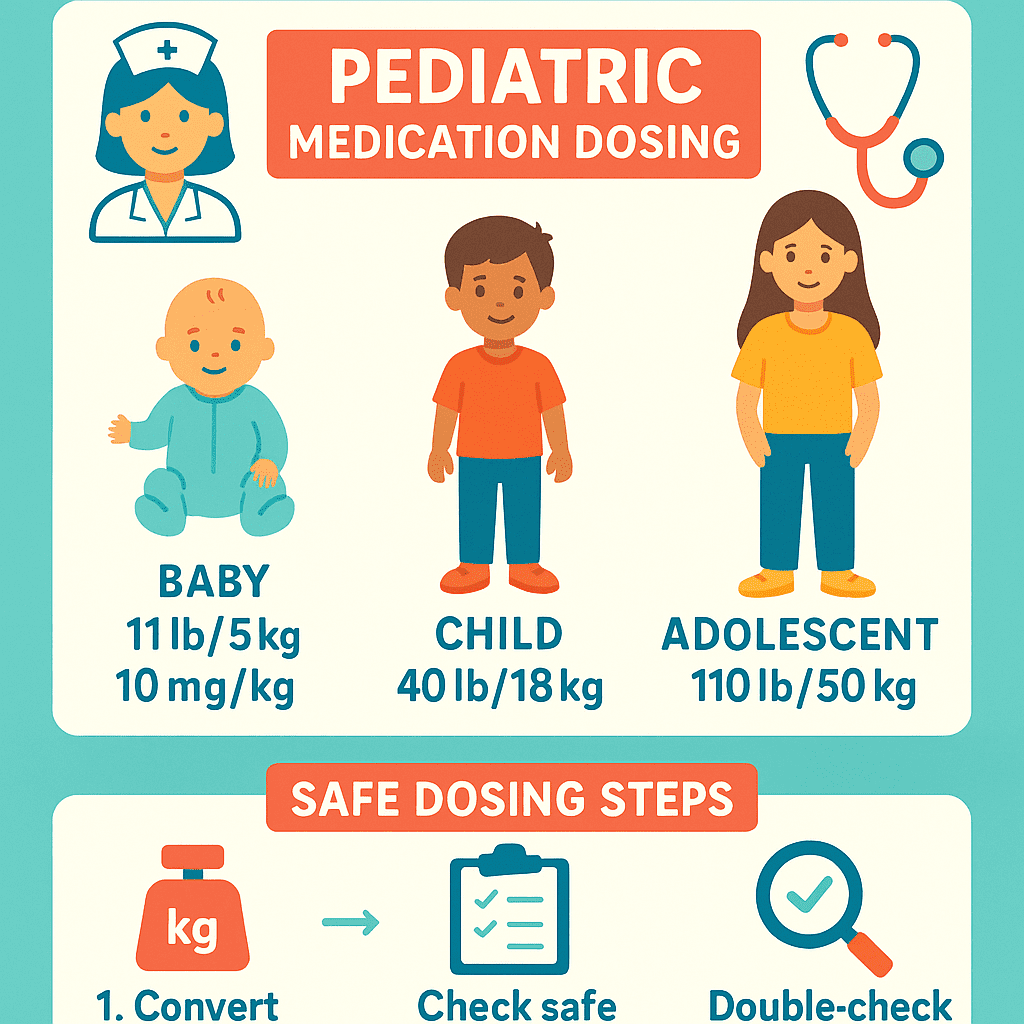Medication dosing in pediatrics is very different from adult care. Unlike adults, where many doses are standardized, pediatric dosing is primarily weight-based. For nurses and nursing students preparing for the NCLEX, understanding these calculations is a must. A registered nurse (RN nurse) must be confident in calculating and double-checking every pediatric dose to avoid medication errors.
This guide breaks down pediatric medication dosing rules, explains safe nursing practices, and highlights what every nursing bundle for NCLEX prep should cover.
Why Weight-Based Dosing Matters in Pediatrics
Children’s bodies process medications differently than adults. Factors such as immature liver and kidney function affect metabolism and excretion. To prevent overdose or underdose, most pediatric doses are prescribed in mg/kg/day or mg/kg/dose.
💡 Key NCLEX Tip for Nurses: Always calculate using the child’s weight in kilograms, never pounds.
The General Rule for Pediatric Dosing
- Convert weight to kilograms
- Divide pounds by 2.2.
- Example: 44 lb ÷ 2.2 = 20 kg
- Apply the drug’s safe dose range (usually written as mg/kg/dose or mg/kg/day).
- Check maximum daily dose to ensure you don’t exceed it.
- Round appropriately (usually to the nearest tenth or hundredth depending on the medication).
✅ Example for Nursing Practice (Amoxicillin):
- Safe dose: 20–40 mg/kg/day divided every 8 hours
- Child’s weight: 20 kg
- Dose range: 400–800 mg/day
- If prescribed 250 mg every 8 hours → total 750 mg/day (safe).
Nursing Priorities in Pediatric Dosing
For the registered nurse and student preparing for the NCLEX, here are essential safety priorities:
- Double-check all pediatric doses (high-alert medications must always be verified).
- Use weight-based calculators but confirm results manually.
- Consider age-specific risks (e.g., neonates vs. toddlers).
- Verify the route of administration (oral, IV, IM) before giving.
- Teach parents safe medication measurement at home (no household spoons).
High-Risk Medications in Pediatrics
Some drugs require extra caution in children:
- Insulin – dose calculated precisely per kg, requires double-checking.
- Opioids – high risk of respiratory depression.
- Antibiotics (aminoglycosides, vancomycin) – risk of toxicity, require serum levels.
- Electrolytes (potassium, magnesium) – must be carefully diluted and monitored.
💡 NCLEX Alert: If a prescribed dose is above or below the safe range, hold the medication and call the provider. Nurses are the final safeguard.
Quick Pediatric Dosing Memory Aid for Nurses
- Always think: mg/kg
- Round carefully – avoid overdosing.
- Double-check with another nurse for high-alert meds.
- Never guess – if unsure, recheck the calculation.
Final Thoughts for NCLEX & Nursing Practice
Pediatric medication dosing is a critical skill for every nurse and RN nurse. Since small miscalculations can lead to big consequences, mastering weight-based dosing is an NCLEX must-know.
If you’re preparing for exams, consider using a nursing bundle that includes pediatric dosing practice sheets, calculation drills, and NCLEX-style questions. With repetition and safe practice, you’ll be ready to give the right dose, every time.

